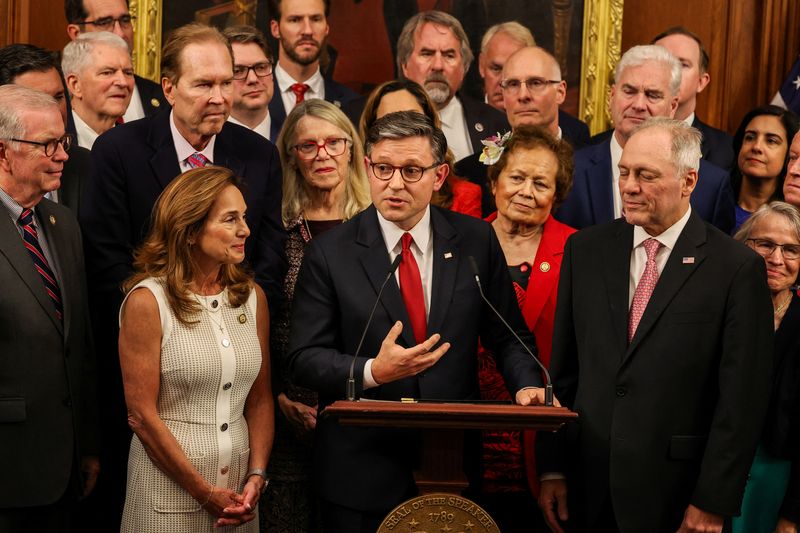Trump tax bill avoids one debt crisis but deepens future financial risks

Impact of the Tax-Cut and Spending Bill on U.S. Debt and Markets
The recent passage of a tax-cut and spending bill by Congress has provided temporary relief from the risk of a U.S. government default, but it has also deepened concerns about the country's long-term fiscal health. The legislation, which includes extending President Donald Trump’s 2017 tax cuts, increasing military and border security spending, and making significant reductions in Medicare and Medicaid, is expected to add trillions of dollars to the national debt.
A Temporary Solution with Long-Term Consequences
One of the key provisions of the bill is the raising of the U.S. government's borrowing limit by $5 trillion, pushing back the projected "X-date" when the Treasury would no longer be able to meet its obligations. Analysts had previously estimated this date could occur as early as late August or early September. By extending the borrowing limit, the bill provides a short-term fix for the debt ceiling crisis, but it does not address the underlying structural issues that contribute to the growing national debt.
According to nonpartisan analysts, the bill is expected to add $3.4 trillion to the national debt over the next decade. This increase raises concerns about the supply of U.S. Treasuries and the potential for declining demand, which could lead to higher borrowing costs for the government.
Market Reactions and Concerns
Financial experts have expressed worries about the long-term implications of the bill on the bond market. Mike Medeiros, a macro strategist at Wellington Management, noted that the legislation exacerbates two major concerns: ongoing fiscal deficits and elevated debt levels, as well as inflation. BlackRock, a leading investment firm, warned that foreign investors are becoming increasingly wary of U.S. debt, which could further reduce demand and push up borrowing costs.
The bill is also projected to cut tax revenues by $4.5 trillion and reduce federal health insurance coverage for 10.9 million people over the next decade, according to the Congressional Budget Office. While the legislation aims to stimulate economic growth by allowing businesses to fully expense equipment purchases and research and development costs, some investors worry that the debt burden could undermine the intended economic benefits.
Economic Growth and Investor Sentiment
Despite these concerns, some market participants believe the bill could boost corporate earnings and drive equity values. Ellen Hazen, chief market strategist at F.L. Putnam Investment Management, noted that the legislation may accelerate corporate growth, which could positively impact stock markets. However, she cautioned that higher Treasury rates could make fixed-income investments less attractive in the long run.
Benchmark 10-year Treasury yields rose on Wednesday after a period of decline, reflecting growing concerns about the fiscal outlook. Andrew Brenner, head of international fixed income at National Alliance Capital Markets, suggested that the selloff was a sign that bond vigilantes—investors who punish poor fiscal policies—are watching the market closely. These investors are reportedly looking for more deficit reduction efforts from the government.
Market Focus Shifts to Other Factors
While the bill has been a topic of discussion, many market participants argue that it is not the primary driver of current market trends. The S&P 500 Index reached a record high on Wednesday, driven by gains in tech stocks and progress on U.S. trade agreements. Additionally, a slowdown in economic data has led to expectations of potential interest rate cuts by the Federal Reserve this year.
Robert Pavlik, a senior portfolio manager at Dakota Wealth, emphasized that market movements are primarily influenced by earnings reports and Federal Reserve policy rather than the recent legislative developments. He noted that while the bill is an important factor, it is not the main focus for investors at this time.
Conclusion
The recent tax-cut and spending bill offers a temporary solution to the debt ceiling crisis but highlights the growing challenges facing the U.S. fiscal system. As the nation continues to grapple with rising debt levels and shifting investor sentiment, the long-term implications of this legislation remain a subject of intense debate among economists and financial experts.
Post a Comment for "Trump tax bill avoids one debt crisis but deepens future financial risks"
Post a Comment